A walk to the Internet Cafe and a stroll down a waking TTK Road
It starts the same way each morning - about 6am I get up, take a shower
and start making my way up TTK Road to the Internet Cafe (M.A.M. Computers).
This morning was a bit of a departure from the usual routine. Initially
there was no water for a shower. Seems the tanks were empty last night and
somehow were not refilled. But soon, we had water, and hot water for a shower.
Its fun walking up TTK Road and watching Madras (Chennai) wake up.
The streets are just starting to wake up and you see all
sort of transport, merchants, folks sort of getting their
act together and kids going to school. Here are a couple of wake up
photos - kids off to school and the intersection near my internet haunt.
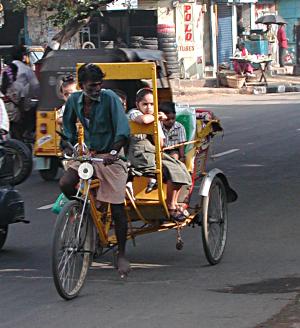
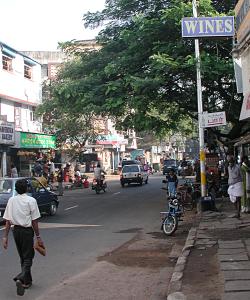
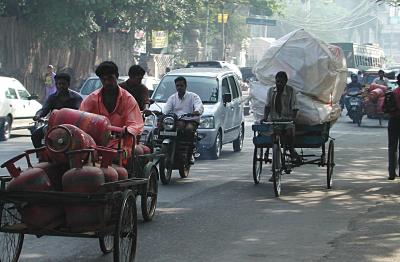
Merchants wake up just like everyone else - peddling buckets and sweets:
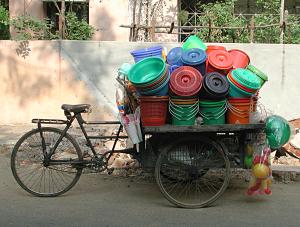
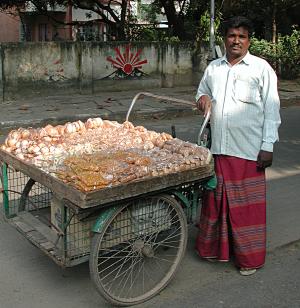
and vegetables (I like the vegetable man)
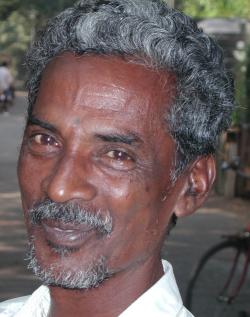
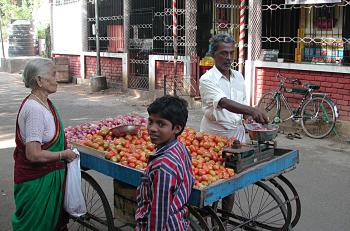
and his helper
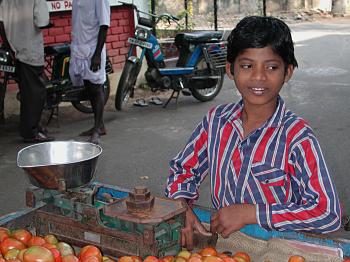
The streets are quiet enough
for a man to quietly read the morning paper while
another man appears to be waiting for something. To the left of the waiting
man is another man on a hand powered tricycle - used by folks with walking
disabilities:


Then there are the sidewalk "shops" - the shoeman polishing shoes -
in static and dynamic presentations:

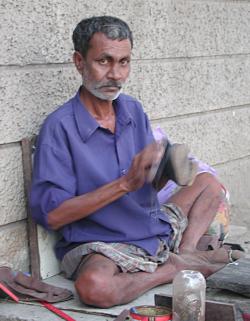
the flower and grass ladies:
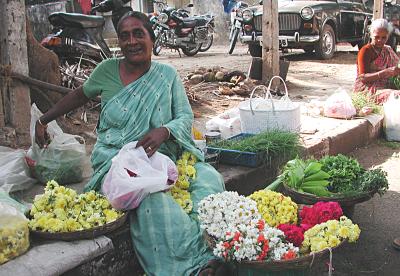
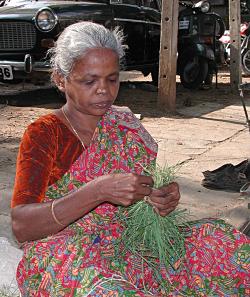
As the city wakes up, the roads fill with the usual array of transport

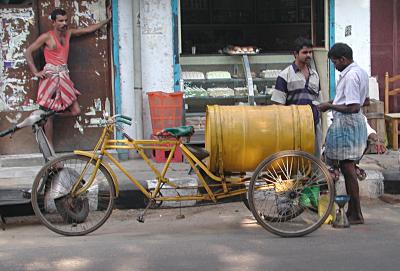
including trucks for hire and big lorries that liberally exercise the
law of large noises
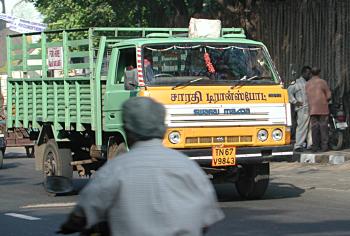
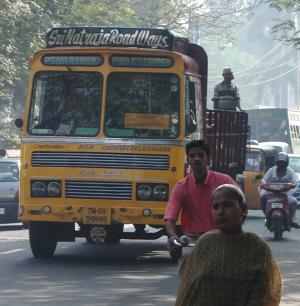
and a water truck and folks having fun riding in the back of a lorry
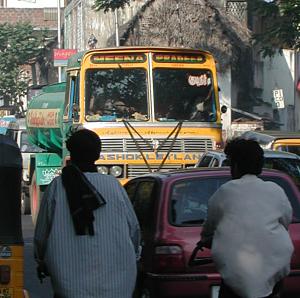
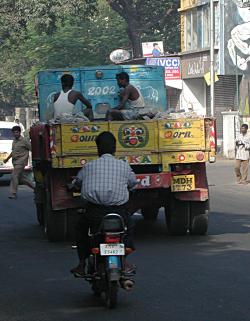
Traffic Order or Traffic Brownian Motion (real chaos) ?
But in addition to the city waking up, traffic develops - evolving
from quiet empty streets to streets seemingly filled with some very
impatient people, impatients displaying brownian-motion-like driving
and liberal use of the horn (
see the earlier explorations of the molecular
biology of autorickshaw horns ).
So interesting is the chaos and brownian-motion driving trajectories
associated with
impatient driving (and creating horn noises) - that its good matrial for
a humorous photo essay - started in brief here.
The following photos must be carefully studied with
close attention made to proper identification of the painted lane markers.
First a photo of what I call
patient driving - a bus driver abiding to the lane marks that separate
the opposing flows of traffic.
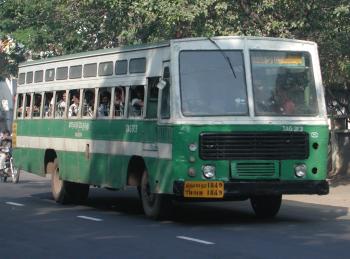
And now, what I call, impatient driving - displayed by another bus
that has deviated significantly from the lane marker:
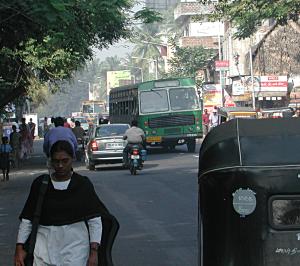
But not to be too harsh on the bus drivers - everyone, mostly, drives in
a manner that I would call "impatient". In the next example, a small minivan
passes a group of bicycle riders. This looks absolutely safe - but this
impatience overrides all sorts of safety situations - as seen in the photo
above this section - the impatient water truck about to collide with the
red automobile.
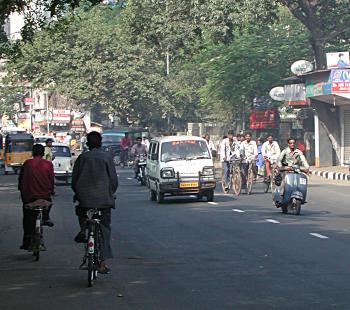
When impatient driving abounds, then the 3 laws of Indian driving are
invoked - note
that the number of accidents arising from this type of impatient behavior
is not very high - primarily because you continuously
invoke rule #1 - don't hit what is in front
of you (meaning do not consider who has the legal right-of-way). Rule #2
is essential and also is continuously invoked:
do not become distracted by what is happening behind you.
And finally, the law of Large Noises - always give way to the guy with
the large noise - its probably a bus, water truck or big lorry.
I've come to enjoy watching and sometimes participating in driving under
such conditions, because it gives me an opportunity to test what I call
the "Law of Irrelevance". The basic idea is that no matter how impatient you
are, you almost always arrive at the next traffic signal, independent of
your speed and driving skill. Traffic in the US, Greece, Egypt, Hong Kong
and India all seem in agreement with the law of irrelevance.
Thus endest our stay in Chennai :)
Off to Muscat
Back to Around the World

This work is licensed under a Creative Commons License.
C. Frank Starmer